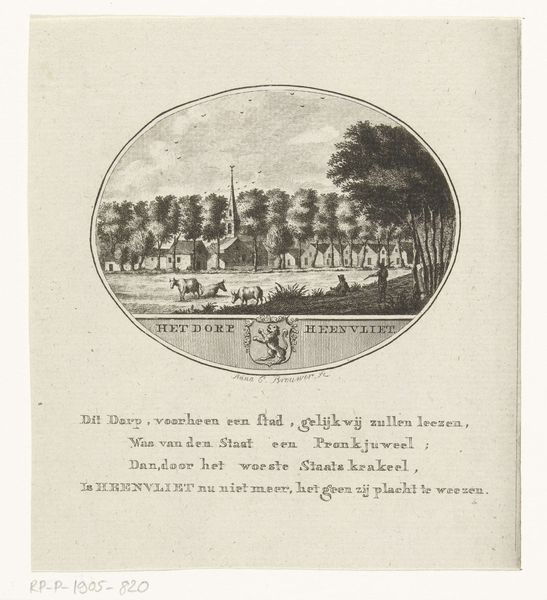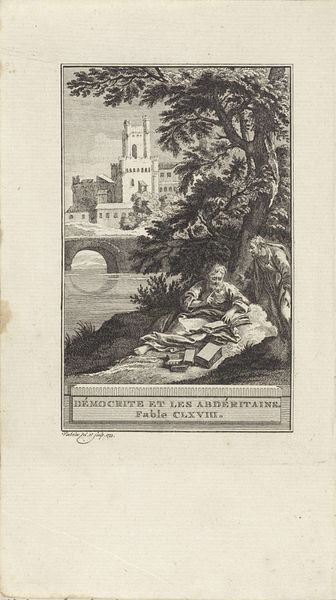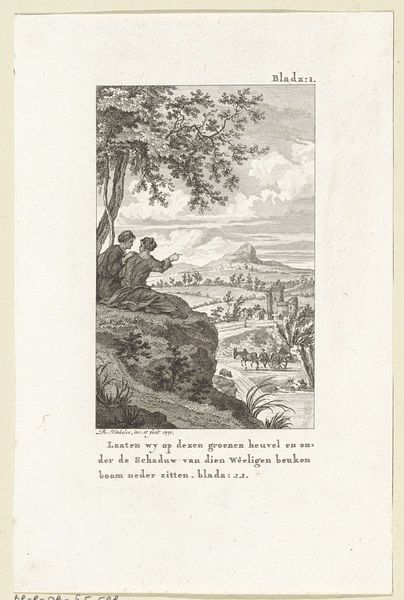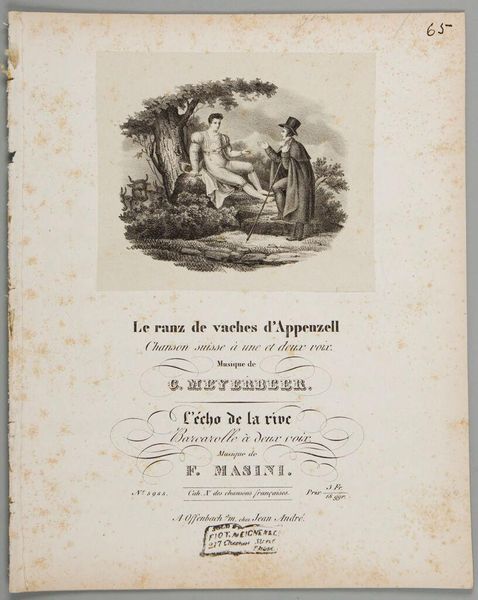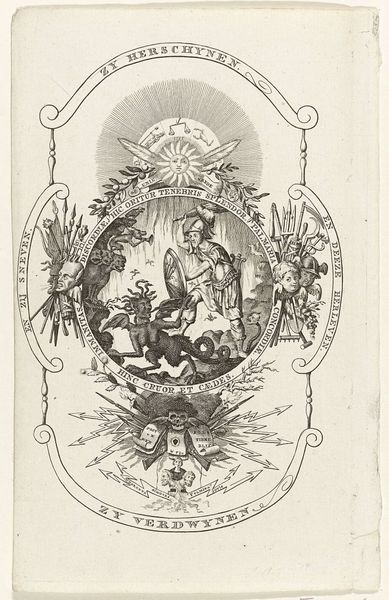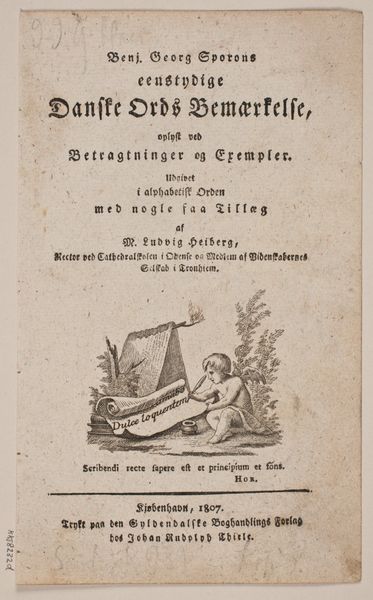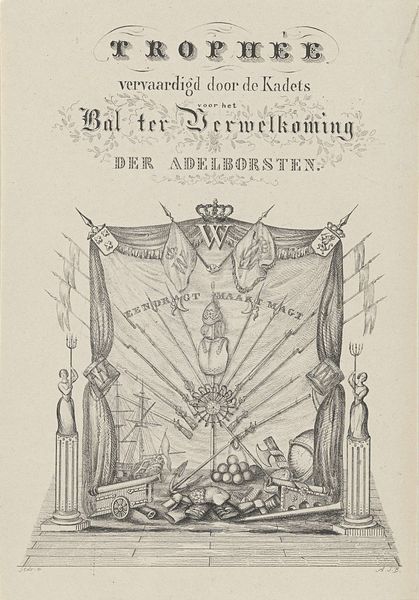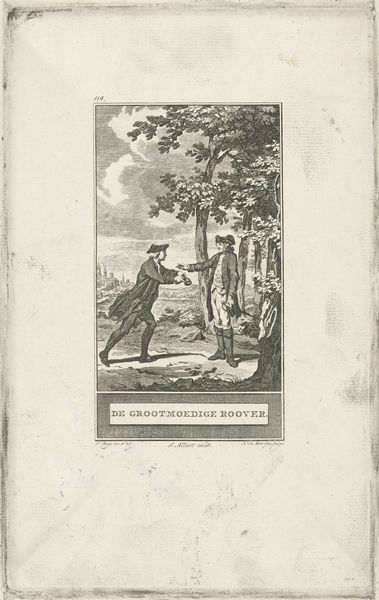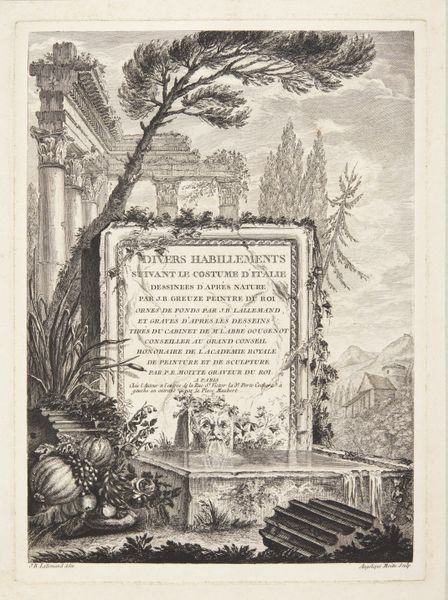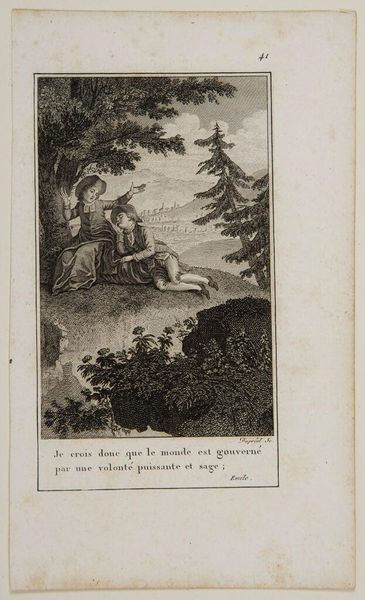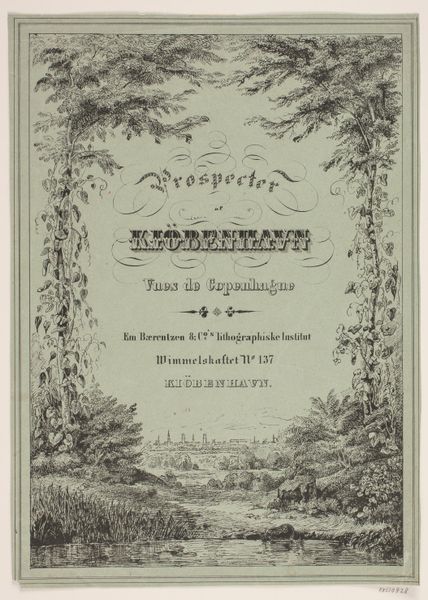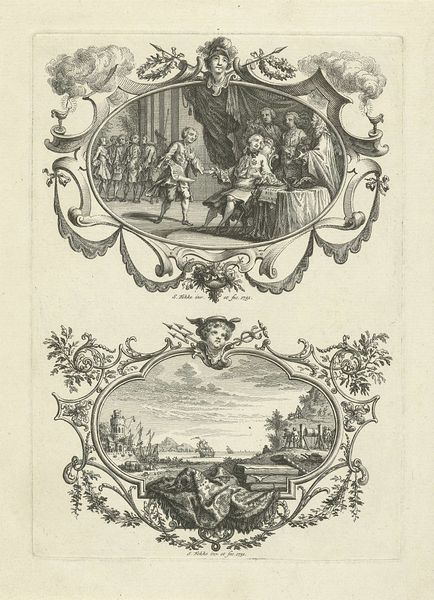
print, engraving
#
neoclacissism
#
allegory
# print
#
old engraving style
#
landscape
#
figuration
#
engraving
Dimensions: height 170 mm, width 96 mm
Copyright: Rijks Museum: Open Domain
Editor: This is "Putti met de attributen van Apollo aan de voet de Parnassus," an engraving from 1803 by Derk Anthony van de Wart. It feels… classically idyllic, but also a bit impersonal. What strikes you most about it? Curator: For me, it speaks volumes about the cultural aspirations of the early 19th century. We see the neoclassical style asserting itself through the idealization of form, the emphasis on mythological subject matter, and a deliberate reference to antiquity. But consider the context: Why was neoclassicism so appealing at this moment? What need was it fulfilling? Editor: I guess I hadn't thought about it like that. So, it's not just about pretty pictures of putti. Curator: Precisely. The Napoleonic era was a period of intense societal change. Neoclassicism, with its perceived link to republican Rome, offered a visual language of order, reason, and civic virtue – qualities desired, or at least publicly promoted, in the wake of revolution. Notice how the putti, symbols of innocence and play, are nonetheless rigidly posed within a carefully constructed landscape leading to an austere temple bathed in sunlight? Editor: Right, they're not really playing, are they? More like performing. Curator: Exactly! Think of this print not as an isolated aesthetic object but as a cultural artifact actively participating in a discourse about values, governance, and the desired moral compass of the era. Does the imagery reflect or attempt to shape the social reality of the time? What contradictions can we uncover? Editor: It’s fascinating to consider the art’s intent instead of just the immediate aesthetic impression. Thanks! Curator: My pleasure. Always look beyond the surface!
Comments
No comments
Be the first to comment and join the conversation on the ultimate creative platform.
